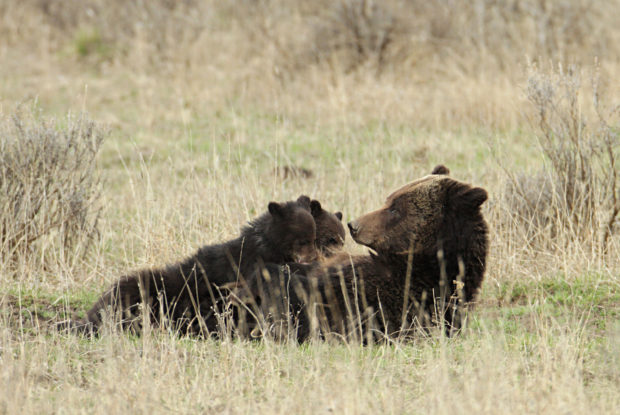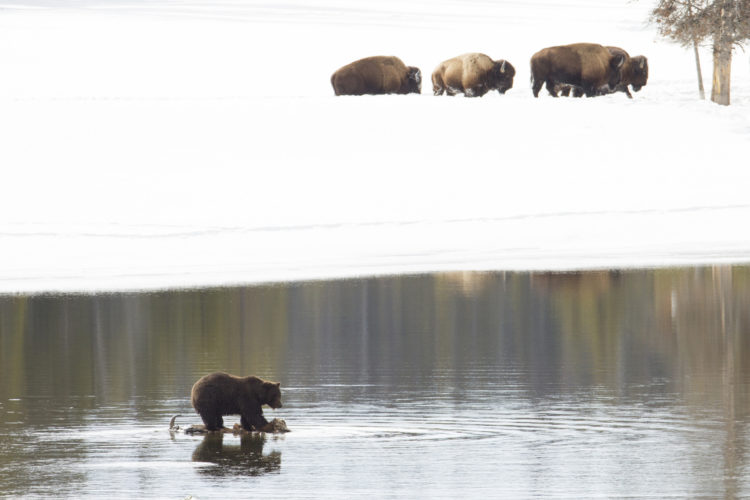We have much more to do and your continued support is needed now more than ever.
Grizzlies Adapt to a Changing Environment and Prosper!

Forty-two years after grizzly bears in the Greater Yellowstone Ecosystem were listed under the Endangered Species Act, the U.S. Fish and Wildlife Service (USFWS) has decided that the Yellowstone grizzly population has grown to the point that federal protections are no longer needed and that future bear management should be led by the states of Montana, Wyoming and Idaho.
The decision by USFWS represents success at many levels.
First, the Endangered Species Act has worked exactly as its authors intended. The ESA is built on a framework that calls for federal protection of imperiled wildlife but only until populations recover. Once recovery occurs, management is passed on the states and their fish and wildlife agencies while federal resources continue to be focused on other threatened and endangered wildlife. Grizzly delisting means the Yellowstone population has grown steadily for years and has achieved biologically established goals for both population numbers and distribution across the ecosystem.

Second, the delisting of Yellowstone grizzlies is only occurring because over 42 years bear managers and researchers have built one successful program that has protected both bears and their habitats and another that has studied and evaluated the Yellowstone population to determine how bears are responding. Through these efforts we know the bear population has both grown substantially in numbers even as the range of grizzlies has expanded far beyond the borders of Yellowstone National Park. Even as bears are delisted, the partnership between researchers and managers will continue so that our knowledge of grizzlies will grow and our management can be further refined.
Third, the cooperation between agencies has been matched by the contributions of many non-governmental organization and individuals. Through an incentive program, the National Wildlife Federation has reduced conflicts between livestock grazing and grizzlies on over one million acres. The Greater Yellowstone Coalition and Defenders of Wildlife have made significant contributions cleaning up campgrounds and bear-proofing agricultural operations. Local landowner groups, individual ranchers and many other organizations have also contributed. Along with research and management initiatives by the agencies, this work will continue even as delisting occurs.

Finally, no list of success stories would be complete without a nod to Ursus arctos horribilis. While managers planned, scientists studied and people watched, grizzlies have adapted to a changing environment and prospered. Cut off from garbage and other sources of human food, grizzlies have shifted and expanded their diet to include elk calves and carrion, wandered up talus slopes to consume cutworm moths and occupied territories from which they had been absent for decades. Numbers of females with cubs, the most crucial reproductive segment of the population, have grown substantially over the last 30 years and all indications are that grizzlies now occupy most suitable habitat the Greater Yellowstone.
Bears are remarkable animals in many ways, not the least which is an ability to accommodate tourists, hikers, big game hunters, snowmobilers and a growing human population in much of the Greater Yellowstone.




















